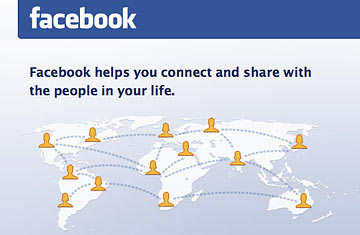
Blow up your browser! The Next Big Thing is the AfterWeb. Facebook made a monumental announcement Monday that seemed as though it was designed to one-up its supposed rival Twitter. But in fact, the real news is that Facebook, like so many others these days, is morphing away from a website, to something far more evolved.
Early today, Facebook announced it was opening up the "stream" — the real-time feed of members' status updates, wall posts and such — to outside developers. Developers can now create new programs that mashup and remix those core data, making the information more useful and fun for members. For instance, say you were a developer, you could build "Facebook dials," as a way for members to dial in which Facebook friends they're interested in — bucketing for later perusal status updates and so forth from the key people in their life — and dial down the ones who aren't. (Read "Facebook Wants to Read Your Mind.")
The common wisdom says Facebook's move is part of the cat-and-mouse game the world's most-popular social network is playing with Twitter, the world's most popular micromessaging service. That may be partly true, but I doubt Facebook is all that worried about weetle-ol' Twitter. No, something more important is afoot: Facebook is embracing the AfterWeb and blowing up the browser. It is unbundling its website-based business and allowing developers to turn Facebook into a bunch of discrete services that can be delivered over a variety of devices (from PCs to smartphones) far more easily than via its website.
One of the biggest winners here, for instance, is Adobe, whose Air engine (it's free and runs on any PC, Macintosh or Linux computer) will drive many, if not most, of the new Facebook applications. Air creates, in geek parlance, a "run time" — think of it as a universal mini–operating system across all computers. Developers, writing in Flash, can build an application once, and it runs on any computer. About 100 million people have installed it to date. Its most popular application? Tiny programs that make Twitter easier to use than its lean website interface. (See, for instance, Tweetdeck.)
"Initially, the belief was that browsers could solve all problems. But people are beginning to realize there is no single solution appropriate for all uses," says Adrian Ludwig, group manager for the Adobe Flash platform. Note that Ludwig doesn't believe that the browser will disappear. It's just that other tools that draw from the data on the Web will turn out to be better ways to deliver that information than simple websites.
Ludwig says the client library that developers need to build Facebook-specific Air apps has been downloaded 2,500 times in the past three weeks — presumably because Facebook has been getting developers on board for the Open Stream initiative just announced.
"A user shouldn't have to come to facebook.com to use Facebook," says Ethan Beard, Facebook's director of platform marketing. Indeed, Facebook released its own Air client, called Facebook Desktop, as a kind of demonstration project. Adds Beard: "This is really just the beginning."
Two years ago, Facebook made one of its smartest moves when it opened up its platform to outside developers. That allowed programmers to create tiny applets that, in turn, made the service more useful and fun and pulled in more users. Blowing up the browser and letting the same developers figure out new ways to use the pieces is every bit as smart.
Read "25 More Things I Didn't Want to Know About You on Facebook."
